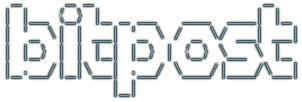The latest reincarnation of Hang The DJ, my music player, is coming along nicely. In the alpha stage, it’s currently an excellent way to stream your massive music collection to your laptop.
It sits atop an open source media streamer called Ampache. I had to extend Ampache to support the more advanced features of Hang The DJ. But this extended version of Ampache still retains its full feature set.
I have plans for a full set of Hang The DJ mobile clients, but they are further down the roadmap.
In the meantime, I can still use Ampache with my iPhone in a couple different ways. There are some Ampache iPhone clients but they are rough and limited. However, Ampache by itself has a nice web interface. You can play your music by downloading, by streaming, or through a bare-bones flash player.
Flash is out on the iPhone. Downloading each song is cumbersome. But the streaming works! It’s not foolproof. The silly Safari browser on the iPhone has a ridiculously short timeout on streaming requests, something like 16 seconds, and I don’t know of any way to adjust it. So for a long time, it just didn’t seem to work for me. But following these rules, I can get to my whole music collection from my iPhone:
- Make sure you have a decent server. I recently upgraded my server to use a quad core i7 cpu and it seems to help.
- Make sure your upload bandwidth is sufficient, obviously. I have really crappy crappy “10Mbit” service from CenturyLink, which gives me about 20kbps upload. Hates it. But it’s currently my only option and it’s working.
- Make sure your iPhone is in a 3G zone. Edge service through AT&T didn’t seem to work. Stupid AT&T.
- Stream 1 song first. This is your best chance of completing the setup between Apache and Safari before timing out. Once that’s confirmed to work, slowly bump it up until you get timeouts. I can do 3-4 songs but 20 seems to fail consistently.
Yeah it’s not ideal. Just more motivation to get going on the iPhone client! 🙂
In the meantime, shoot me an email if you’re willing to try Hang The DJ out on a desktop or laptop, that would rock. Peace.












